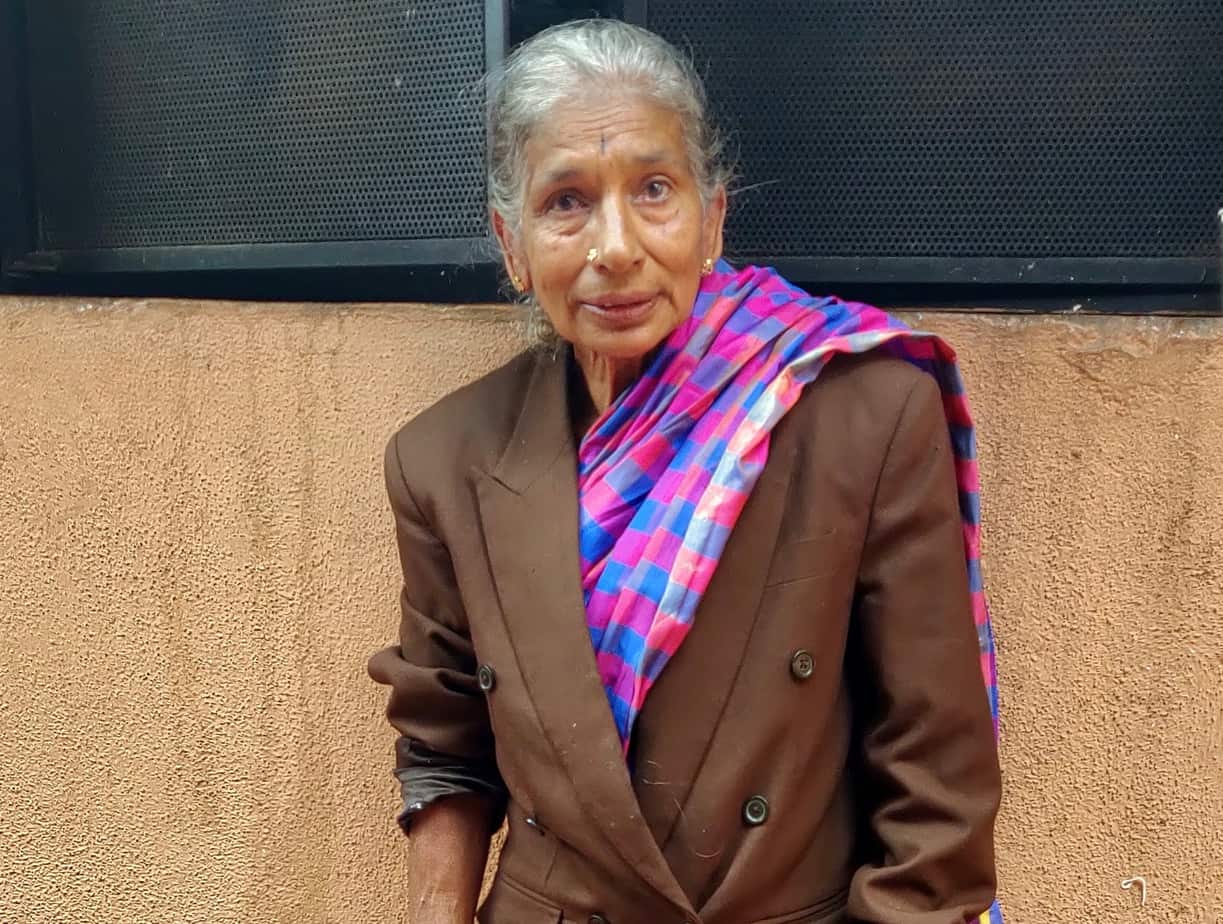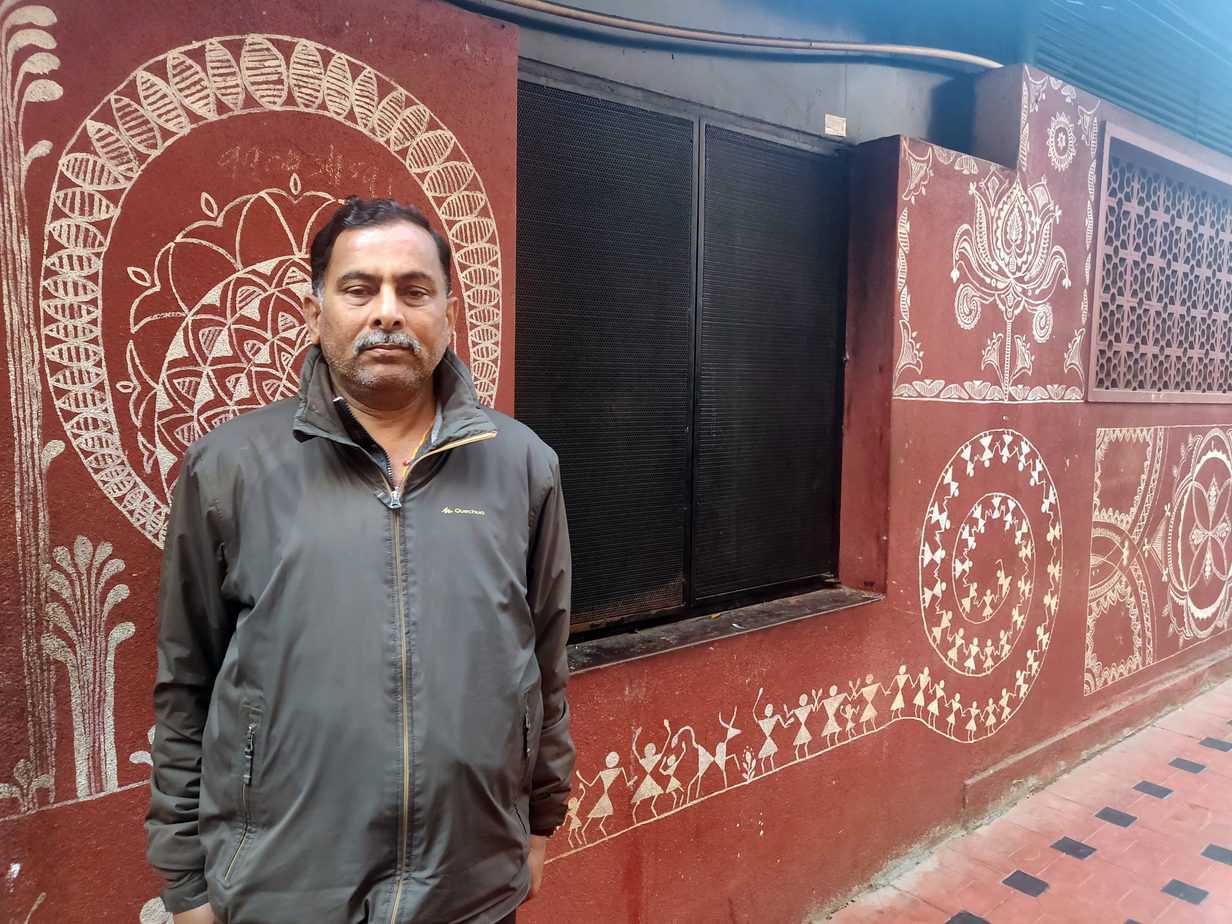
Domestic worker Parvathamma doesn’t know how to avail health insurance for her cataract surgery. Pic: Bindu Gopal Rao
After Nirmala’s mother was hospitalised with suspected dengue, she spent Rs 25,000 over three days to learn that it was only a case of general weakness. It was no small sum for the domestic worker to cough up in three days, not to mention the physical stress and emotional trauma. Nirmala had not even heard of health insurance for workers like herself, let alone have one.
And those who do know about health insurance don’t necessarily have it. Parvathamma, also a domestic worker, who is about 65 years old, asks: “I need to have a cataract operation. Will you help me get health insurance?”
Both the central and state governments have floated various health schemes for the informal sector. But these have not touched the lives of workers like Nirmala or Parvathamma.
Central schemes
Under central government’s schemes, the Rashtriya Swasthya Bima Yojana offers health insurance coverage to BPL families with fixed hospital rates and hospitalisation cover limit of Rs 30,000 for five members of the family. The premium is paid by the centre.
The Employment State Insurance Scheme offers full medical cover to its members and their dependents. The Aam Aadmi Bima Yojana, applicable to rural, landless households, provides compensation for death and disabilities.
There is also the Universal Health Insurance Scheme provided by four public insurers that help with hospitalisation cover limit of Rs 30,000 and death cover of Rs 25,000. The Janashree Bima Yojana gives health insurance for people aged between 18 and 59. The latest scheme, Ayushman Bharat National Health Protection Mission, has a cover of Rs 5 lakh per family per year and is slated to cover over 10 crore poor families.
State government schemes
The Government of Karnataka too has a slew of health care schemes. The Suvarna Arogya Suraksha Trust for both the below poverty line (BPL) and above poverty line (APL) population factors in victims of road accidents.
Through ‘Arogya Karnataka’ the state has become the first in the country to declare and implement the concept of ‘universal health coverage’; this scheme includes primary healthcare and specified secondary and tertiary healthcare benefits. To enroll, one requires an Aadhar Card where biometrics are captured, and a unique ID ‘ArKID’ is generated.

Auto driver Kumara V has used state government’s Arogya Karnataka insurance for his health expenses. Pic: Bindu Gopal Rao
Auto driver Kumara V, a resident of Muneshwara Block, used this card when he fell ill. But quiz him about health insurance, and he says: “I do not have any insurance as such, and I am not aware of any of the insurance schemes.”
|
Group insurance initiative by Bangalore Apartments’ Federation
Outside of state-sponsored health insurance schemes, there are at least two prominent initiatives by private associations and individuals. The Bangalore Apartments’ Federation (BAF), that represents over one lakh flats in Bengaluru, recently launched its MADHURA (Medical Aid for Domestic workers Under Residential Apartments) scheme that proposes a cover of Rs 1-2 lakh for domestic workers.
As the workers typically work in multiple homes, the premium is proposed to be collected by the employers (who can share the amount) and the domestic worker as well. The objective is to ensure that domestic workers’ category, which does not fall under the purview of the eligible households category of the National Food Security Act, get medical aid.
Srikanth Narasimhan, General Secretary, BAF, explains: “Even though people above the poverty line get coverage under the Arogya Karnataka and Ayushman Bharat schemes, they still have to pay at least 30 percent under the co-pay mode in case of hospitalisation, which will remain unaffordable for them. Under the MADHURA group insurance scheme, more than 95 percent of their expenses will be covered, and they will also have access to a much larger network of hospitals compared to those offered under the government health insurance schemes. Also enrolment in government schemes is a huge process. Here all we need is for the association to give us the names of the family members and pay the premium.”
BAF is currently in the process of working out the specifics of the scheme keeping in mind the balance between affordability, benefits and accessibility.
Startups get into social security space
Gigibenefits, started by Nandini Vishwanath, is exclusively for gig workers, blue collar workers and informal workers who have no social security cover like insurance and pension. The platform is available as an app on Google Play Store.
The signing up process is simple. One has to download the app and create an account before opting for insurance. A small amount is charged regularly towards the benefit. The app has partnered with top product manufacturers in the respective fields to curate affordable benefits for subscribers. Find more information here.
Most informal workers are excluded from insurance
While most domestic workers and gig economy members are unaware of health insurance – both state-sponsored and private – for people like Srinivasa Murthy who works as a security personnel in a temple in South Bengaluru, insurance means a corporate card. “While I don’t have any health insurance, my wife has a corporate one, so I am also covered,” he said.

Srinivasa Murthy, a security personnel, gets health cover from his wife’s corporate insurance card. Pic: Bindu Gopal Rao
The lack of awareness about insurance can be attributed to the general absence of laws and regulations in the informal sector, notes Geeta Menon, Secretary, Stree Jagruti Samiti. “A Social Security Board was setup for unorganised workers, but it is almost defunct. A few years back, we enrolled about 10,000 workers in the Rashtriya Swasthya Bima Yojana by paying registration fee of Rs 30. But the way the scheme was rolled out was arbitrary, and only 1000 workers were covered. Then the scheme moved from the Labour Department to the Health Department, and we have not heard anything since. So basically most workers continue to have no insurance,” says Geeta.
What’s more, most health insurance schemes focus on hospitalisation. “Workers are rather hesitant to be hospitalised as they cannot risk losing out on work,” Geeta pointed out. “The need really is for some help in outpatient services (OPD), scanning facilities and medicines at lower cost. Hence most people in the informal sector do not really go for insurance as it makes no sense to them even if the premium is low”.
How to Register
Following are the steps to register for various central and state health insurance schemes.
Rashtriya Swasthya Bima Yojana
This is a health insurance scheme for BPL families that provides hospitalisation cover of Rs 30,000 for a family of five on a floater basis; the government pays the premium. Cashless option is also available. More information on enrolment here.
Steps:
- A registration fee of Rs 30 needs to be paid at enrolment stations in all villages and centres.
- A smart card is given post capturing biometrics of the insured.
- The insured person can then avail health insurance from any of the network hospitals registered under the RSBY scheme.
Employment State Insurance Scheme
The Employees’ State Insurance Scheme (ESIS) is applicable to factories and other establishments where 10 or more persons are employed. The ESI Scheme is financed by contributions from employers and employees; employees earning daily wages less than Rs 137 are exempted from their share of contribution.
Steps:
- The factory is required to provide to ESI documentation including PAN cards of its employees.
- After verification, the government will issue a 17-digit unique number to the employee.
- The employee will need to provide the employer a filled form and photographs of his family members as part of registration.
- ESI card will be issued after registration.
Aam Admi Bima Yojana and Janashree Bima Yojana
The Aam Admi Bima Yojana (AABY) and Janashree Bima Yojana (JBY), administered by the Life Insurance Corporation, have been merged. A nominal premium of Rs 200 per year is charged. Apart from accidental death and disability cover, a scholarship benefit is also given to a maximum of two children of the beneficiary, studying between 9th to 12th standard. The scholarship amount is Rs 100 per month for each child, once every six months. More details here.
Steps:
- You can apply at any of the registered nodal agencies or via LIC.
- The insured must be aged between 18 and 59 years.
- The scheme is available only to the head of the family or the earning member of the family who is below the poverty line in rural areas, with landless households.
- Documentation required includes ration card, Aadhaar card, extract from school and birth certificate as well as any identity card issued by the Government of India or any reputed employer.
Ayushman Bharat
The Ayushman Bharat National Health Protection Mission has a cover of Rs 5 lakh per family per year. It offers cashless benefits from any public/private empaneled hospital across the country. More details here.
Steps:
- Go to the NHA portal and log in to mera.pmjay.gov.in.
- Enter your mobile number and captcha code.
- A one-time password will be sent to your mobile number.
- After entering the OTP, you will need to select the state of residence and fill your name, mobile number, ration card number, or Rashtriya Swasthya Bima Yojna URN number.
- If your name is in the list, it will show up on the right-hand side of the page.
- Click on ‘Family Members’ tab to find beneficiary details.
- Required documents include respective special category certificates, age proof documents, family structure, identification details, contact information, scanned copy of Aadhar, income certificate and caste certificate.
Arogya Karnataka Scheme
Enrolment is based on the person’s Aadhar Card number; the insurer’s biometric impression is captured and authenticated with CIDR Aadhar Server. Treatment is free for BPL card holders. For APL card holders, only 30 percent of the cost will be borne by the government.
The scheme covers 1523 procedures. An eligible patient is one who is a resident of Karnataka state and belongs to an ‘eligible household’ as defined under the National Food Security Act, 2013. Whereas a general patient is a resident of Karnataka but does not come under the definition of eligible household as defined under the same Act, whose treatment cost will be on co-payment basis. Enrolment can be done here.
Steps:
- Visit any primary health care centre or private hospital.
- Medical staff will assist you to open a digitised applicant form on the official portal of the Arogya Karnataka Scheme.
- After filling the digitised application form along with required documents, the applicant will receive a unique ID card.
- Documents required are residential proof, ID proof, ration card, Aadhar card, PDS card.